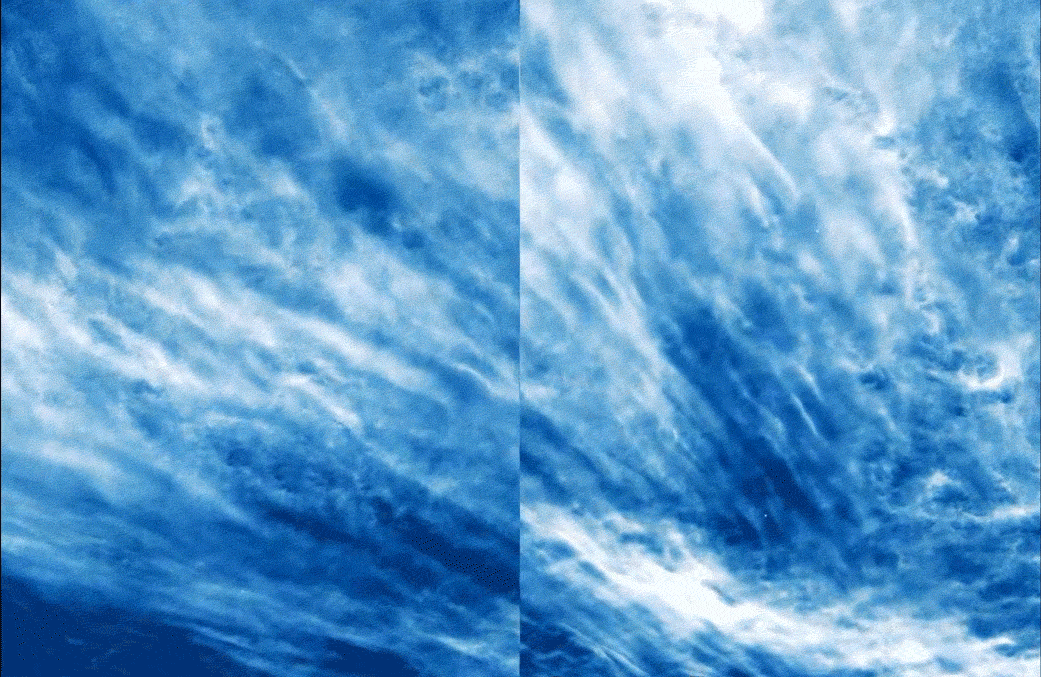The First Season of Noctilucent Clouds from AIM
The Aeronomy of Ice in the Mesosphere (AIM) mission is the first satellite dedicated to the study of noctilucent clouds. Noctilucent clouds, sometimes called Polar Mesospheric Clouds, were first reported in 1885. Forming at altitudes above 50 miles, they are so faint that they can only be seen from the ground in the reflected light of the Sun after it has set below the horizon. Since their discovery, their cause has been a subject of study as a possible indicator of climate change. For those interested in observing noctilucent clouds from the ground, there are images and information at SpaceWeather's Gallery of Noctilucent Clouds.
This movie presents a daily accumulation of data from the AIM spacecraft for the northern hemisphere. The circular gap over the Earth's geographic pole is due to a gap in the satellite coverage.

Opening push-in to the globe.

A view of the northern hemsphere near the start of the cloud season (May 20, 2007).

June 16, 2007

June 23, 2007

June 28, 2007

July 9, 2007

July 15, 2007

July 20, 2007

July 24, 2007

August 1, 2007

August 4, 2007

August 5, 2007

August 10, 2007

August 15, 2007

September 2, 2007: The End of the Season for the Northern hemisphere.
For More Information
Credits
Please give credit for this item to:
NASA/Goddard Space Flight Center Scientific Visualization Studio
-
Animator
- Tom Bridgman (Global Science and Technology, Inc.)
-
Scientist
- James M. Russell (Hampton University)
-
Writer
- William Steigerwald (NASA/GSFC)
Release date
This page was originally published on Monday, December 10, 2007.
This page was last updated on Wednesday, May 3, 2023 at 1:55 PM EDT.
Missions
This page is related to the following missions:Datasets used
-
[Aeronomy of Ice in the Mesosphere (AIM)]
ID: 199This dataset can be found at: http://aim.hamptonu.edu/
See all pages that use this dataset
Note: While we identify the data sets used on this page, we do not store any further details, nor the data sets themselves on our site.
